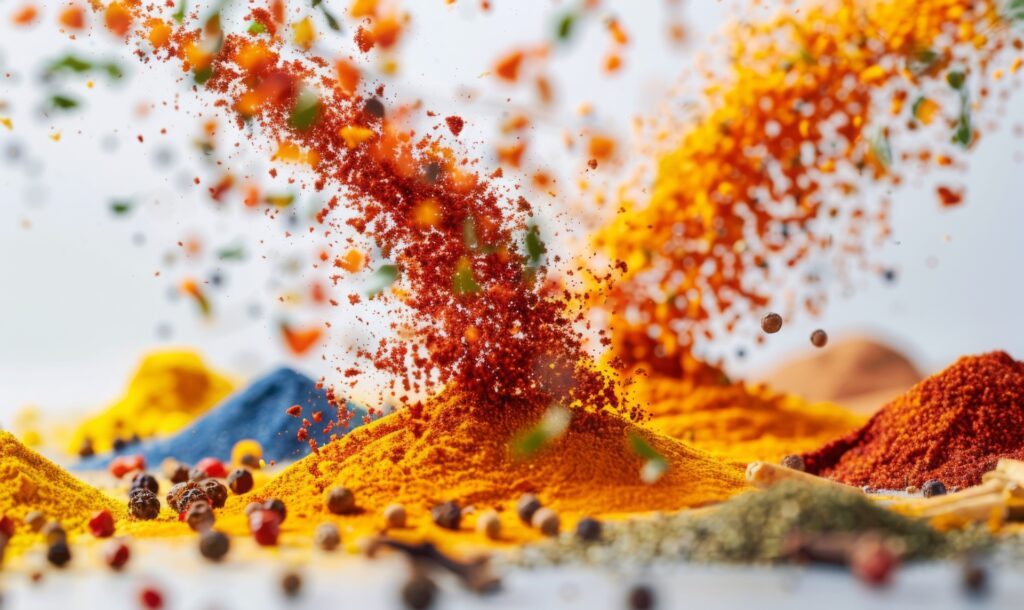
Spices have the magical ability to transform even the simplest dishes into vibrant, flavourful masterpieces. While common spices like black pepper and cumin are staples in many kitchens, exotic spices can elevate your meals, introducing bold flavours and enticing aromas. Chef Abdul shares expert tips on incorporating these treasures into everyday cooking, unlocking their full potential.
Saffron, known as the “queen of spices,” is prized for its deep golden hue and floral, slightly earthy flavour. Often used in Persian, Indian, and Mediterranean cuisines, saffron is ideal for rice dishes, desserts, and even teas.
Chef Abdul’s Tip:
Steep a pinch of saffron threads in warm water or milk for 10 minutes before adding it to dishes like biryanis, risottos, or custards for an even distribution of flavour and colour.
Sumac is a deep red spice with a tangy, lemon-like flavour. It’s commonly used in Middle Eastern cuisine and perfect for brightening savoury dishes.
How to Use:
Chef Abdul’s Favourite: Sumac-dusted roasted cauliflower paired with tahini dressing.
With its sweet, floral, and slightly spicy flavour, Cardamom is a versatile spice used in sweet and savoury dishes across Indian, Arabic, and Scandinavian cuisines.
How to Use:
Chef Abdul’s Tip: Always crush whole cardamom pods before using them to release their full aroma.
Za’atar is a Middle Eastern spice blend made with thyme, sesame seeds, sumac, and salt. Its flavour is savoury, nutty, and slightly tangy.
How to Use:
Chef Abdul’s Favourite: Za’atar-spiced roasted eggplant served with a dollop of yoghurt.
Fenugreek seeds and leaves are common in Indian and North African cooking. They offer a unique sweet, nutty, and slightly bitter flavour.
How to Use:
Chef Abdul’s Tip: Balance fenugreek’s bitterness with tangy ingredients like tomatoes or yoghurt.
Harissa is a North African chilli paste from roasted peppers, garlic, and spices. It adds depth and heat to dishes without overwhelming the palate.
How to Use:
Chef Abdul’s Favourite: Harissa-marinated grilled zucchini with fresh herbs.
Nigella seeds, also known as black cumin or kalonji, are small black seeds with a nutty, slightly peppery taste. They’re used in Indian, Middle Eastern, and Turkish cuisines.
How to Use:
Chef Abdul’s Tip: Toast nigella seeds lightly to release their earthy aroma.
Star anise, shaped like a star, has a liquorice-like flavour and is often used in Chinese, Vietnamese, and Indian cooking.
How to Use:
Chef Abdul’s Favourite: Star anise-infused vegetable stock for a depth of flavour in soups.
Turmeric is a bright yellow spice known for its earthy flavour and health benefits. It’s used in South Asian cooking and is gaining popularity worldwide.
How to Use:
Chef Abdul’s Tip: Pair turmeric with black pepper to enhance its absorption in the body.
Ras el Hanout is a Moroccan spice blend that typically includes cinnamon, nutmeg, cardamom, and cloves. It’s warm, aromatic, and slightly sweet.
How to Use:
Chef Abdul’s Favourite: Roasted chickpeas with a Ras el Hanout seasoning mix.
Bringing Exotic Spices to Everyday Cooking
Incorporating exotic spices into your kitchen doesn’t require a complete recipe overhaul. Add a pinch of these spices to your existing dishes to explore their flavours. As Chef Abdul says, “Spices are the soul of a dish; they tell a story of culture, tradition, and creativity.”
Embrace these spices, experiment with your favourite combinations, and let your meals reflect the global richness of flavours waiting to be discovered!
Chef Abdul © Copyright 2024. All rights reserved.